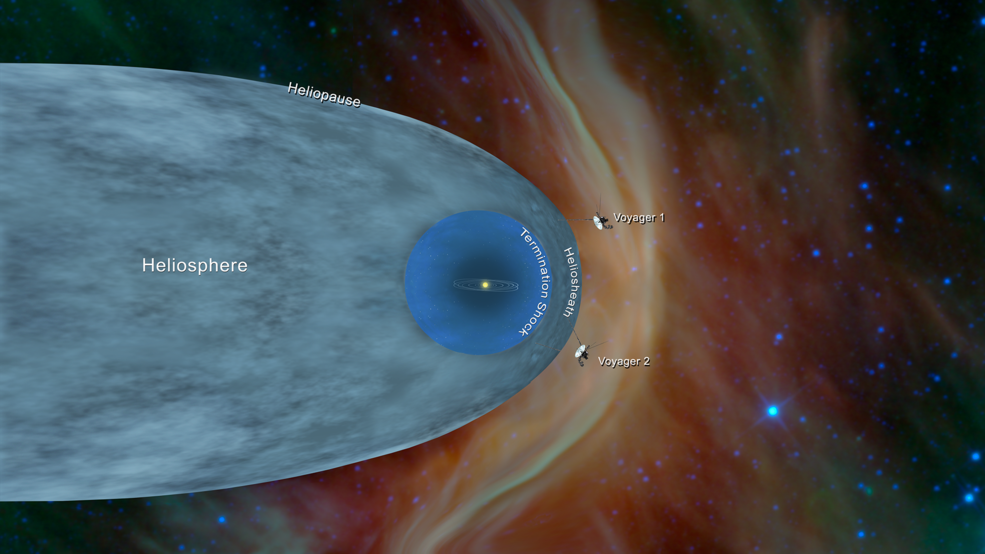NASA has announced that, for the second time in history, an object made by humans has gone beyond the heliosphere – the protective bubble the Sun creates, which extends past Pluto’s orbit – and that object is none other than the Voyager 2 spacecraft.
The Voyager 2 had no way of letting the scientists know directly it has gone past this limit, but the mission scientists compared data from the instruments on board the spacecraft and concluded that the probe crossed the heliosphere border on November 5th. Its predecessor, the Voyager 1, has went beyond this border in 2012.
The spacecraft is around 11 billion miles away from Earth and, while it can still communicate with mission control, the information it sends takes around 16.5 hours to reach them.
NASA Jet Propulsion Laboratory/ YouTube
The Voyager 2 has from five to ten years of life left, and in all this time it will continue to relay back information about the conditions in the environment it encounters.
“Voyager has a very special place for us in our heliophysics fleet, our studies start at the Sun and extend out to everything the solar wind touches. To have the Voyagers sending back information about the edge of the Sun’s influence gives us an unprecedented glimpse of truly uncharted territory.”
– Nicola Fox, Director of the Heliophysics Division at NASA
The Voyager 2 was launched in 1977 and it has traveled further than it was initially assumed it would manage to – it was only supposed to stay around for five years and conduct studies on Jupiter and Saturn but now, at 41 years old, the Voyager 2 is officially, NASA’s longest running mission.
Follow TechTheLead on Google News to get the news first.





















